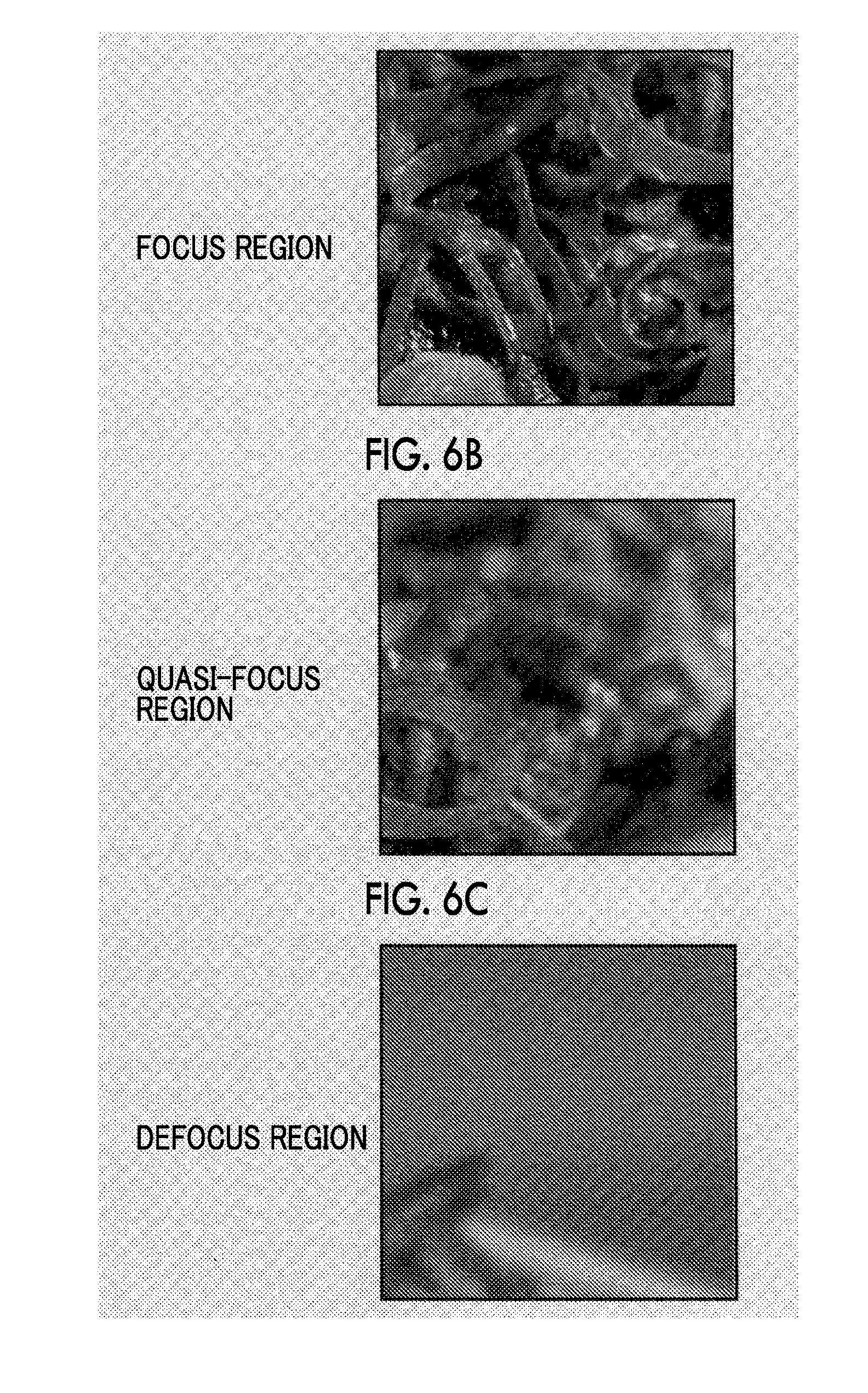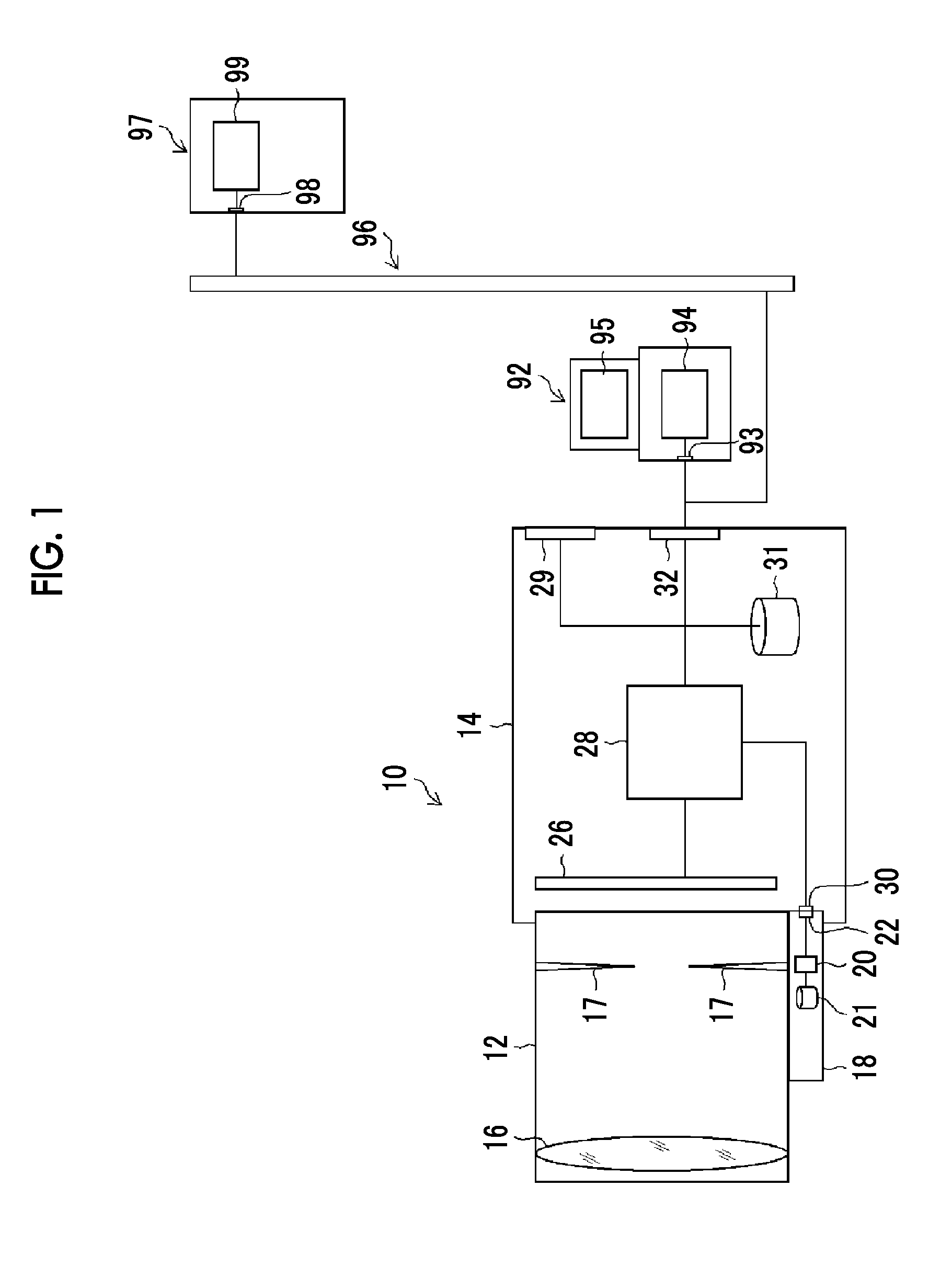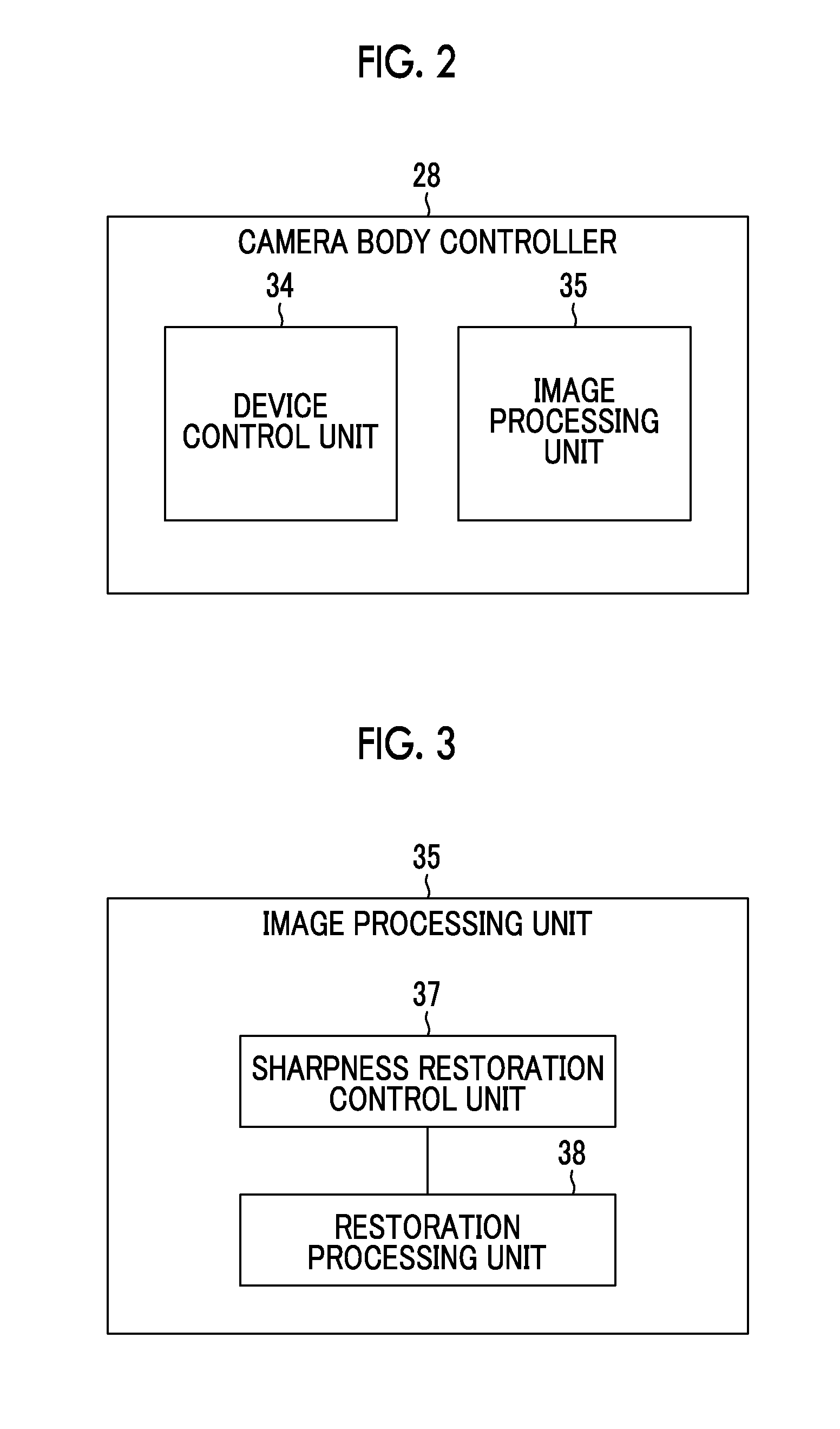Image processing device, imaging device, image processing method, and image processing program
a technology of image processing and imaging device, applied in image enhancement, image analysis, instruments, etc., can solve the problems of inaccurate frequency characteristics of input images, adverse effects, and generation of artifacts, so as to prevent over-correction and improve the image quality of original image data
- Summary
- Abstract
- Description
- Claims
- Application Information
AI Technical Summary
Benefits of technology
Problems solved by technology
Method used
Image
Examples
first embodiment
of a Quasi-Focus Region Detection Unit
[0139]Next, a first embodiment of the quasi-focus region detection unit 50 shown in FIG. 4 will be described.
[0140]FIG. 8 is a block diagram showing a first embodiment of the quasi-focus region detection unit 50 that detects a quasi-focus region corresponding to the definition 1 of the quasi-focus described above. The quasi-focus region detection unit 50 of the first embodiment is configured to include a band pass filter (BPF1) 50a, a summing unit 50b, and a determination unit 50c.
[0141]The band pass filter 50a that is a form of a frequency component extraction unit passes frequency components near a specific frequency including the specific frequency (specifically, frequency components of 0.05 fs (326 TV lines) to 0.25 fs (1632 TV lines)), among the frequency components of original image data (input image). The summing unit 50b sums the absolute values of the frequency components input from the band pass filter 50a for each separate region, wh...
second embodiment
[0191]FIG. 20 is a block diagram showing an example of the configuration of an image processing unit 35-2 of a second embodiment that replaces the image processing unit 35 shown in FIG. 3.
[0192]The image processing unit 35-2 includes a sharpness restoration control unit 37-2, a restoration processing unit 38, and an outline enhancement processing unit 39 that functions as a sharpening processing unit that is not based on the point spread function. The restoration processing unit 38 is similar to the restoration processing unit 38 of the image processing unit 35 shown in FIG. 3. Accordingly, the detailed explanation thereof will be omitted.
[0193]The outline enhancement processing unit 39 performs sharpening processing using a sharpening filter, which is not based on the point spread function, on image data. The sharpening filter is not particularly limited if a filter reflecting the point spread function directly is not used, and a known outline enhancement filter can be used as a sh...
third embodiment
[0239]FIG. 23 is a diagram showing the configuration of a processing block that performs point image restoration processing and sharpening processing according to a third embodiment. The same configurations as in the second embodiment shown in FIG. 22 are denoted by the same reference numerals, and the detailed explanation thereof will be omitted.
[0240]A sharpness restoration control unit 37-3 according to the third embodiment acquires a sharpening rate in the sharpening processing, and calculates a “restoration rate” in the point image restoration processing based on the total sharpness restoration rate and the sharpening rate.
[0241]The sharpening rate (sharpening strength magnification V) is input to the sharpness restoration control unit 37-3 (automatic strength adjustment unit 52-3). The sharpening strength magnification V input to the automatic strength adjustment unit 52-3 is designated in advance by the user before the image processing in the restoration processing unit 38 an...
PUM
 Login to View More
Login to View More Abstract
Description
Claims
Application Information
 Login to View More
Login to View More - R&D
- Intellectual Property
- Life Sciences
- Materials
- Tech Scout
- Unparalleled Data Quality
- Higher Quality Content
- 60% Fewer Hallucinations
Browse by: Latest US Patents, China's latest patents, Technical Efficacy Thesaurus, Application Domain, Technology Topic, Popular Technical Reports.
© 2025 PatSnap. All rights reserved.Legal|Privacy policy|Modern Slavery Act Transparency Statement|Sitemap|About US| Contact US: help@patsnap.com



